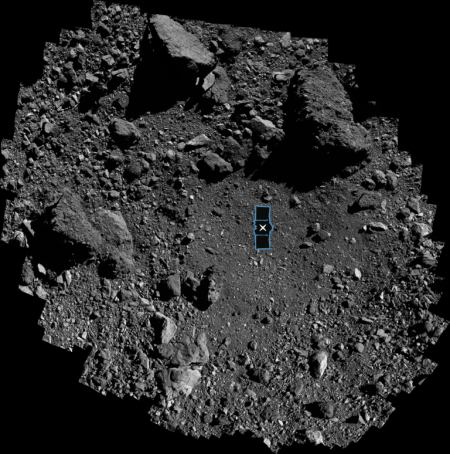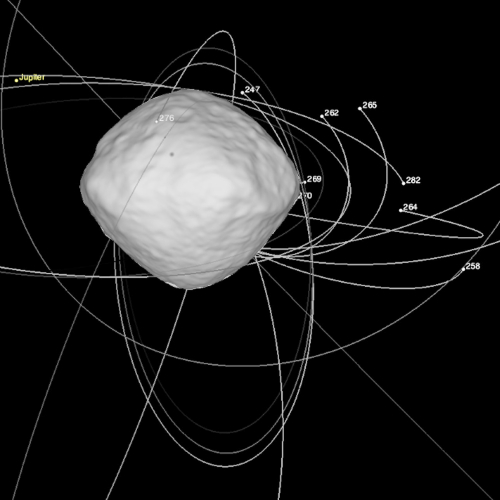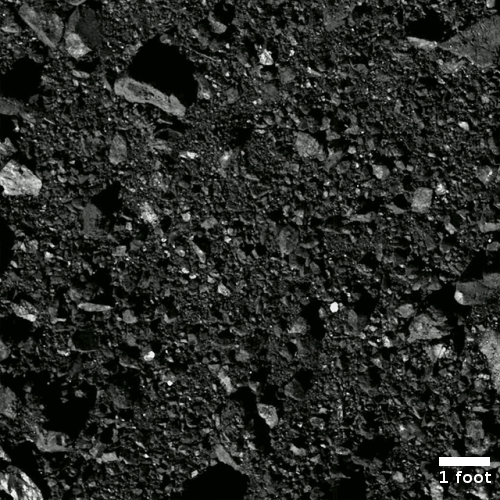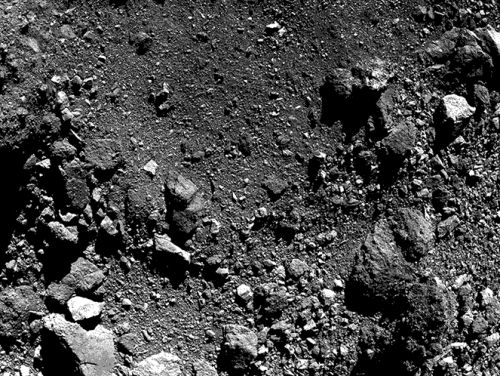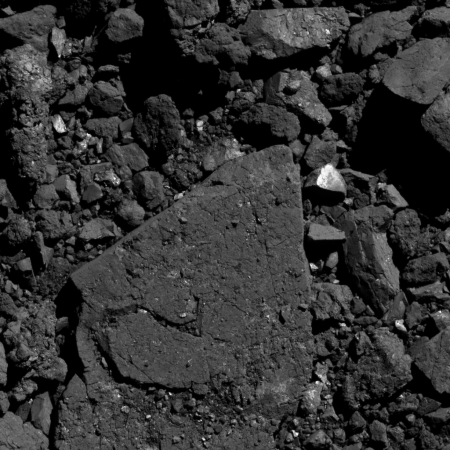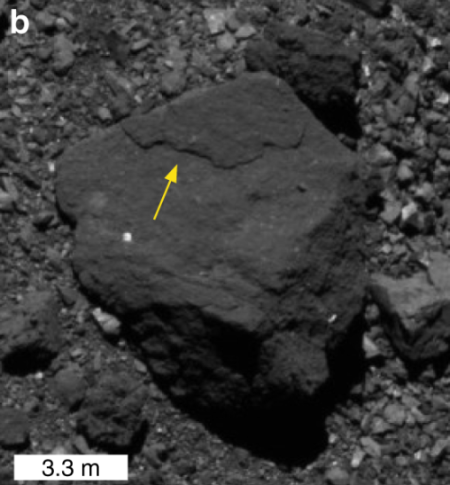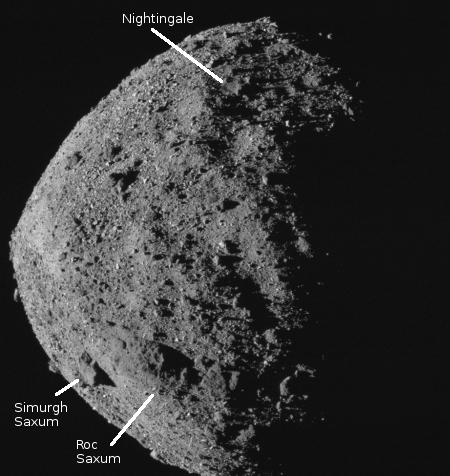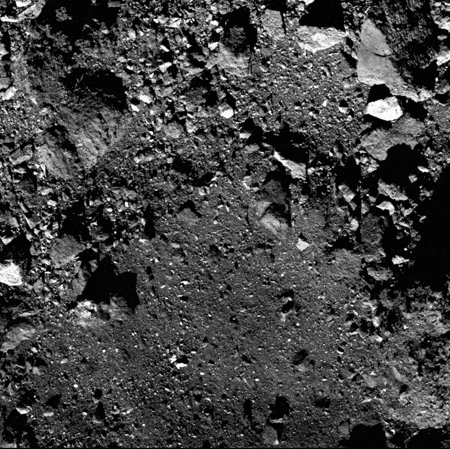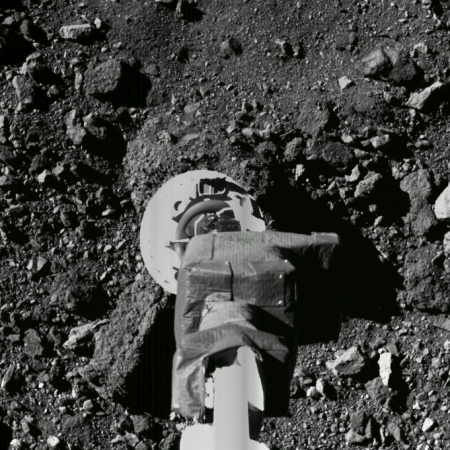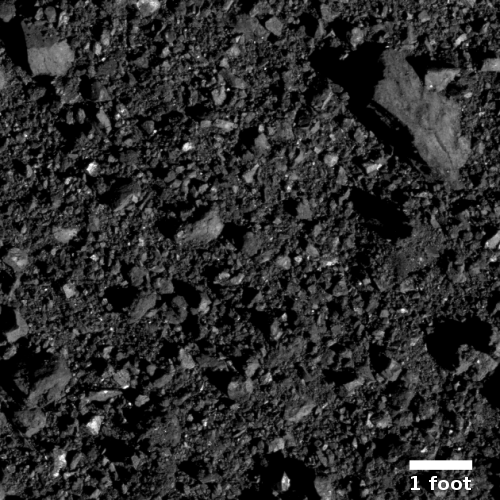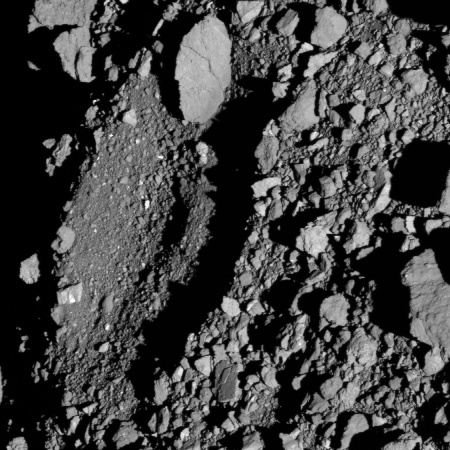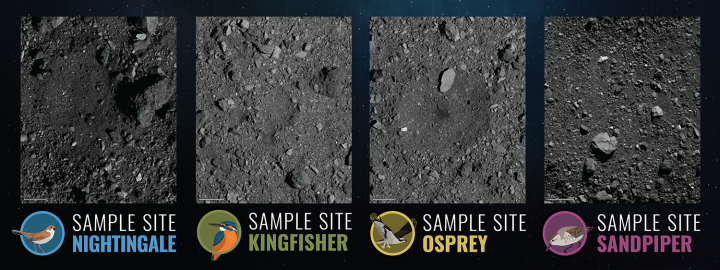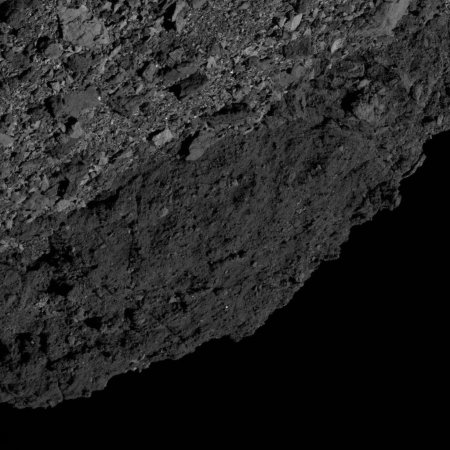More results about Bennu from OSIRIS-REx
Scientists using the OSIRIS-REx spacecraft have now published a special collection of papers outlining some of their discoveries made during that spacecraft’s observations of the asteroid Bennu from February to October 2019.
These papers just make official much of what was revealed during a conference I attended in November 2019. To sum up the papers:
- Bennu has a lot of carbonates across its surface.
- Some of that material came from another object that had to have had water.
- The asteroid’s boulders come in two types, dark-porous and bright-solid, with the latter likely from that water-bearing other asteroid
- Bennu’s surface is fresh, only recently exposed to space, including the sample site Nightingale.
- Bennu’s interior has large voids, and its equatorial region is less dense.
The discovery of carbonates, produced from the interaction of water and carbon dioxide, is a big deal. As Dante Lauretta, OSIRIS-REx principal investigator, explained at that November conference, “To me this is one of the most exciting results from the conference.”
These findings have allowed scientists to theorize that Bennu’s parent asteroid likely had an extensive hydrothermal system, where water interacted with and altered the rock on Bennu’s parent body. Although the parent body was destroyed long ago, we’re seeing evidence of what that watery asteroid once looked like here – in its remaining fragments that make up Bennu. Some of these carbonate veins in Bennu’s boulders measure up to a few feet long and several inches thick, validating that an asteroid-scale hydrothermal system of water was present on Bennu’s parent body.
The material could not have been created on Bennu itself, which means it formed on a different object that was large enough and existed long enough to create the veins in these boulders. That material was then flung back into space to settle onto Bennu’s surface.
The freshness of Bennu’s surface is also a big deal, as it means that etither the asteroid is not that old, or that its surface somehow gets plowed over periodically. It also means that when OSIRIS-REx grabs samples at the Nightingale site on October 20th, they will be grabbing material that has not been altered much by the harsh environment of space.
Finally, the data about Bennu’s interior and density is maybe the neatest discovery. As the press release notes,
The reconstructed gravity field shows that the interior of Bennu is not uniform. Instead, there are pockets of higher and lower density material inside the asteroid. It’s as if there is a void at its center, within which you could fit a couple of football fields. In addition, the bulge at Bennu’s equator is under-dense, suggesting that Bennu’s rotation is lofting this material.
Bennu’s very weak gravity makes it a very alien and hard-to-comprehend place. It appears that the gravel in this floating gravel pile is barely held together, some interlocking in a way that leaves many open gaps, with other pieces pulled outward by the spin of the asteroid.
In reading these results, my first impression was an overwhelming sense of time and its inconceivable vastness. Much of Bennu’s most primitive material comes from the early solar system, about six billion years ago. Other material is newer, but required many many millions of years to get created elsewhere, and then somehow end up in space to be captured by this asteroid.
A million years is a very long time. A billion years is a thousand times longer. To conceive such time frames and all that can happen during that time is practically impossible. Bennu has shown us just a hint of how much can happen, some of which we would never have imagined otherwise.
Scientists using the OSIRIS-REx spacecraft have now published a special collection of papers outlining some of their discoveries made during that spacecraft’s observations of the asteroid Bennu from February to October 2019.
These papers just make official much of what was revealed during a conference I attended in November 2019. To sum up the papers:
- Bennu has a lot of carbonates across its surface.
- Some of that material came from another object that had to have had water.
- The asteroid’s boulders come in two types, dark-porous and bright-solid, with the latter likely from that water-bearing other asteroid
- Bennu’s surface is fresh, only recently exposed to space, including the sample site Nightingale.
- Bennu’s interior has large voids, and its equatorial region is less dense.
The discovery of carbonates, produced from the interaction of water and carbon dioxide, is a big deal. As Dante Lauretta, OSIRIS-REx principal investigator, explained at that November conference, “To me this is one of the most exciting results from the conference.”
These findings have allowed scientists to theorize that Bennu’s parent asteroid likely had an extensive hydrothermal system, where water interacted with and altered the rock on Bennu’s parent body. Although the parent body was destroyed long ago, we’re seeing evidence of what that watery asteroid once looked like here – in its remaining fragments that make up Bennu. Some of these carbonate veins in Bennu’s boulders measure up to a few feet long and several inches thick, validating that an asteroid-scale hydrothermal system of water was present on Bennu’s parent body.
The material could not have been created on Bennu itself, which means it formed on a different object that was large enough and existed long enough to create the veins in these boulders. That material was then flung back into space to settle onto Bennu’s surface.
The freshness of Bennu’s surface is also a big deal, as it means that etither the asteroid is not that old, or that its surface somehow gets plowed over periodically. It also means that when OSIRIS-REx grabs samples at the Nightingale site on October 20th, they will be grabbing material that has not been altered much by the harsh environment of space.
Finally, the data about Bennu’s interior and density is maybe the neatest discovery. As the press release notes,
The reconstructed gravity field shows that the interior of Bennu is not uniform. Instead, there are pockets of higher and lower density material inside the asteroid. It’s as if there is a void at its center, within which you could fit a couple of football fields. In addition, the bulge at Bennu’s equator is under-dense, suggesting that Bennu’s rotation is lofting this material.
Bennu’s very weak gravity makes it a very alien and hard-to-comprehend place. It appears that the gravel in this floating gravel pile is barely held together, some interlocking in a way that leaves many open gaps, with other pieces pulled outward by the spin of the asteroid.
In reading these results, my first impression was an overwhelming sense of time and its inconceivable vastness. Much of Bennu’s most primitive material comes from the early solar system, about six billion years ago. Other material is newer, but required many many millions of years to get created elsewhere, and then somehow end up in space to be captured by this asteroid.
A million years is a very long time. A billion years is a thousand times longer. To conceive such time frames and all that can happen during that time is practically impossible. Bennu has shown us just a hint of how much can happen, some of which we would never have imagined otherwise.

